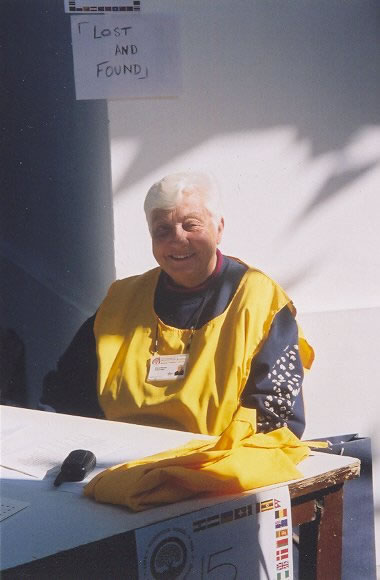Living in a villetta a schiera (townhouse or row house) is quite different from living in a condo apartment building. We learn something new every day.
Garbage is an endlessly complex question. We can put out the umido (wet waste) three times a week, but that can’t include garden trimmings. The comune will supply 150 biodegradable bags per year, free of charge, but we have to go to some particular office during a particular two-week span each year to pick ours up. We haven’t figured out yet whether they will also supply the sacchetti viola andtrasparenti (violet and transparent bags) that we need for recyclables and general waste – it would be nice, as these cost about 20 cents each (perhaps that includes tax?). General waste goes out twice a week, and the sacchetto viola (however many you have) only once. We’ve been giving the recycling guys plenty to do, but are now finally getting rid of the last of our moving boxes. By next week we’ll probably have our outside portico finally cleared – now that the weather’s too cold to use it.
We had to buy a new stove top and oven to fit into the spaces in the kitchen that had been built-in by the previous owners. We learned that gas ovens are going out of style in Italy; 99% of the built-in ovens available are electric. Which could get horribly expensive if you use the oven frequently, as electricity is costly here. For this reason, and because I prefer it for cooking, I insisted on gas. Our plumber, who is well-versed in the ever-changing laws regarding these things (as he must be, since he certifies his installations), learned that the law about gas appliances and air circulation does not even address built-in gas ovens, presumably because they have become so rare. So our set-up is probably legal in default of an actual law about it.
Our new home includes a bit of garden (a lot of it vertical, but that’s okay – we can plant those nice flowers you see growing out of walls all over Switzerland). The lawn has been neglected for years, and is lush with dandelions and some other kind of low-lying weed that chokes out the grass. If you’re keen on lawns, you might think there’s nothing worse than a lawn covered in weeds. Well, there’s one thing that’s infinitely worse: a lawn covered in weeds covered in sewage and toilet paper. Yes, we had a problem with the plumbing.
The previous owner conveniently forgot to mention that anything was wrong, but we learned all about it when, by sheer coincidence, we ended up calling the same sewage guys who had already been here twice in six months. So they suspected that the problem is not ours alone – it’s the main pipe for the whole complex (four families), which has bent, probably due to earth slippage. Since our connection to this pipe is the lowest of the four, we’re the first to suffer when it blocks – I had noticed a foul-smelling burble of liquid coming up through a hole in the concrete manhole cover in our yard. This manhole turned out to cover a drainage reservoir, about half a cubic meter, from which stuff is supposed to drain immediately into the sewage pipe. When we opened it, it turned out to be completely full. (No, I didn’t take video of that.)
Unblocking the mess required inserting a hose as far as possible and squirting in water under high pressure. On the first couple of attempts, from our manhole, this merely caused a backup and overflow, proving the sewage guys’ thesis that the problem was further down. I wish it had not taken spreading disgusting stuff all over our yard for them to determine this.
They then dragged their hoses down to the neighbor’s yard where our collective pipe connects to the city line, and proved, as suspected, that the block was there. Fortunately, they did not spew sewage all over the neighbors’ carefully-manicured lawn, which would have been far more tragic than what they did to my weed collection.
Eventually the line was cleared, and they washed as much of the yuck as they could back down the hole, using the high-pressure hose. But my weeds were furred with toilet paper and the general smell was not pleasant – I’m glad this didn’t happen in summer!
So I spent a couple of hours digging up weeds (something I needed to do anyway), which also removed a lot of the toilet paper (I wore gloves). I hadn’t realized gardening was such backbreaking work – my right arm was so painful from unaccustomed exercise that I couldn’t sleep that night.










